2023-01-03
Knowing how to interact with our paw friends helps us understand them better and improve our relationship with them. In order for this to happen, we need to be aware of how dogs communicate and how to read their body language.
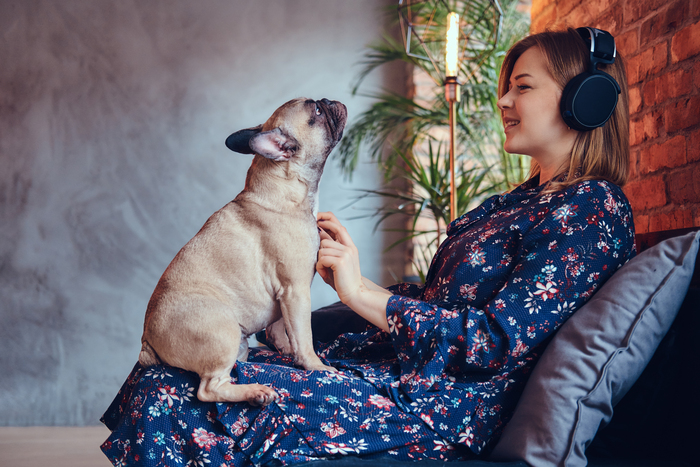
Some dog breeds are more vocal than others, and they produce different sounds when they want to “tell” us something. Barking, whining, growling, howling-there are different types of vocalization that our furry friends use to express their emotions. Vocal signs should be taken into account together with body language and the particular situation.
Physical communication or simply put “body language” is another way dogs interact with us and with each other. When interacting with your paw friend you need to pay attention to both essential parts of the body such as the eyes, the mouth, the tail, and the ears as well as the general disposition of the dog based on the situation.
What your dog actually does (especially when he/she thinks that there is no one watching) is often an even more reliable source of information about his/her character and the issues that he/she may experience, than vocalization or particular physical signs themselves.
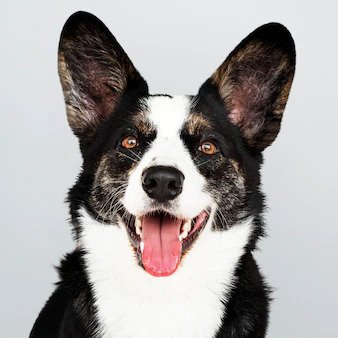
Based on their breed, dogs can have differently-shaped ears, including rounded tip ears, candle flame ears, cropped ears, drop ears, button ears...etc. However, if we have to generalize the types of ears, we would say that there are three main types:
Upright ears; Floppy ears; Half-Floppy ears.
Regardless of what type of ears your dog has, all canines can move the ear base as a way of communication. If your dog’s ears are up, but neither forward nor back, but just in a neutral state, your dog is likely to be calm and relaxed.
Back ears can often be interpreted as a sign of fear, stress, and submission but also as a sign of greeting and excitement due to the presence of the owner. Putting his/her ears back while you are petting him/her or walking through the door, and doing the same thing when seeing another dog, usually expresses different emotions. That is why it is important that you can read the general situation.
Ears forwards usually show curiosity and interest in what is happening at the moment. You are likely to tell something to your paw friend, that he/she is interested in, or maybe he/she heard a sound in the surrounding, that grabbed his/her attention.
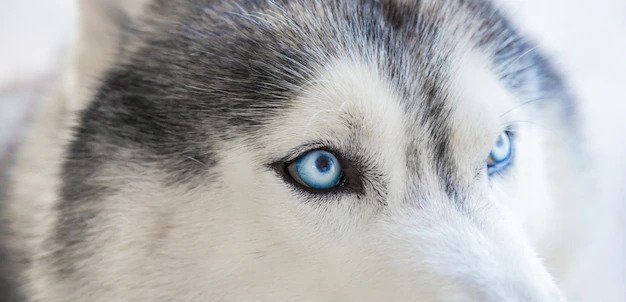
Just like in humans, dogs’ eyes can express so many emotions. We just need to learn to read them.
If your dog’s eyes are soft, and relaxed with no tension, your paw friend is likely to feel comfortable and happy.
If your dog is squinting at you, this typically can be interpreted as a positive sign and is likely to express contentment and happiness.
Eyes wide open, clearly show that your canine is ready to take action (what type of action this would be usually depends on the situation). Your doggy might be focused on a toy, treat, prey or whatever “target” is currently present in his/her environment.
The so-called “whale eye” is when you see the whites of your dog’s eyes. That is usually a sign of fear, anxiety, tension or just feeling uncomfortable.
If your dog stares at you, this is likely to show that he/she is scared and also not comfortable with you getting closer. Staring can also be interpreted as an intention to show aggression.
Completely avoiding eye contact is also not a preferred thing to notice in your dog’s body language. It could mean that he/she is afraid, sad, or feels uncomfortable with you getting into his/her personal space.
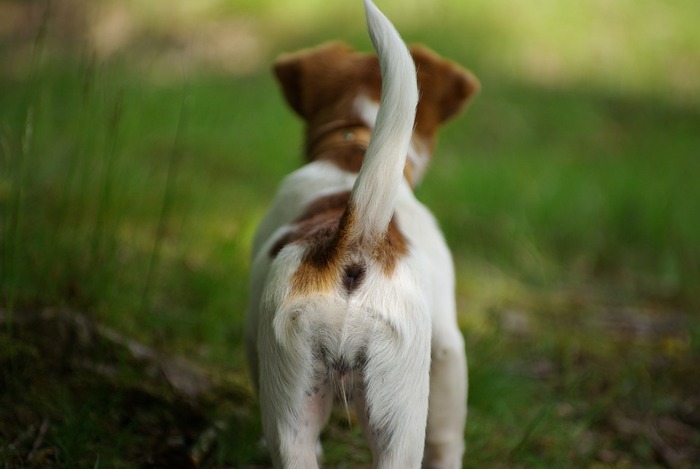
It is easier to read a dog’s body language on his/her tail, in case it is long and not constantly curled. So, owners of certain breeds have an advantage in this case compared to others, i.e. if you have an Akita, a Siberian Husky, an Alaskan Malamute, a Spitz, an American Eskimo Dog, or a Chow-Chow, his/her tail will be curled at all times regardless of what emotions your paw friend would like to express.
Usually, a neutral position of the tail (not too high nor too low and tucked between the legs) shows that the dog is calm and relaxed.
The higher the tail is, the more dominant or aroused the dog is likely to be.
A tail tucked between the back legs, usually indicates that the dog is afraid and stressed.
Wagging the tail could mean different things from feeling threatened, and anxious to being excited and happy. A relaxed dog will wag his/her tail soft and gently. Rapid movements indicate arousal.
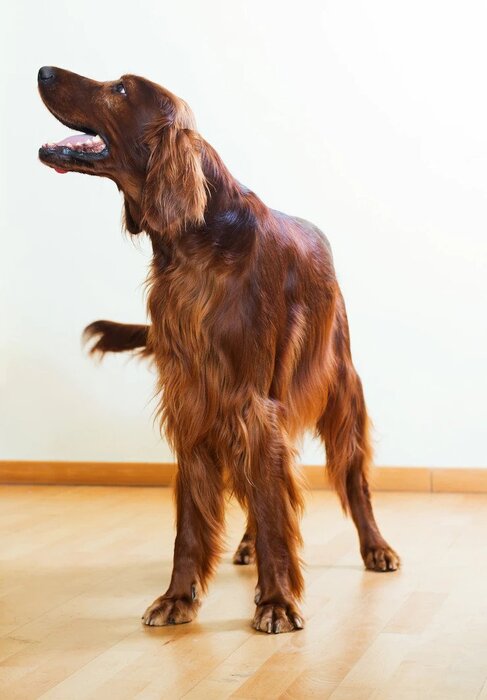
This might be a bit confusing for some owners and could be misinterpreted as a sign of aggression. Showing their front teeth in this case is a sign of greeting, respect, and even submission. Dogs who have done something bad and feel guilty before their owners, are likely to “grin”.
Although it is mainly associated with aggressive behavior growling can also be used during play. When a dog growls aggressively, his/her muzzle usually gets wrinkled. Further signs of an aggressive growling are mouth corners shaped as “C”.
It is important that you can correctly interpret what your dog’s vocalization means-does he/she enjoy playing with you, or you should stay away?
Besides the standard meaning of yawning, namely “I am tired, I want to rest”, this behavior can be interpreted differently when it comes to dogs. It is considered a way for dogs to reduce stress and anxiety and show that they want to be engaged in a conflict. An example could be another dog approaching and your dog starts yawning. Your paw friend is likely to not feel comfortable and try to reduce anxiety.
Similar to yawning, panting, can just mean “I need to relax” or it can also be a way for your dog to respond to a stressful event. If your dog starts panting out of a sudden, without previously being physically active, you should pay attention to the surroundings and figure out if there are any stressful factors. Extra salivation is an additional sign of being anxious and afraid.